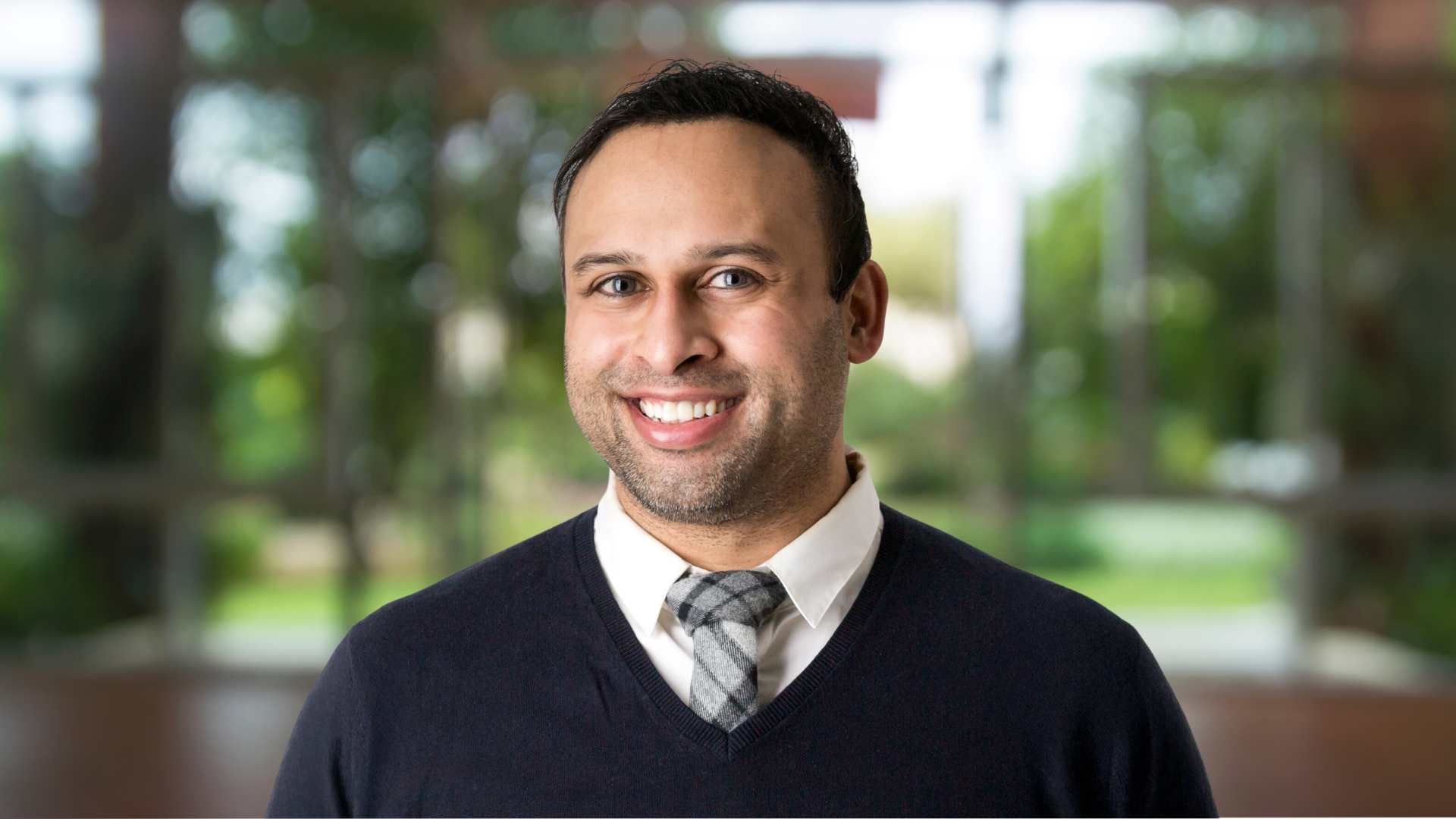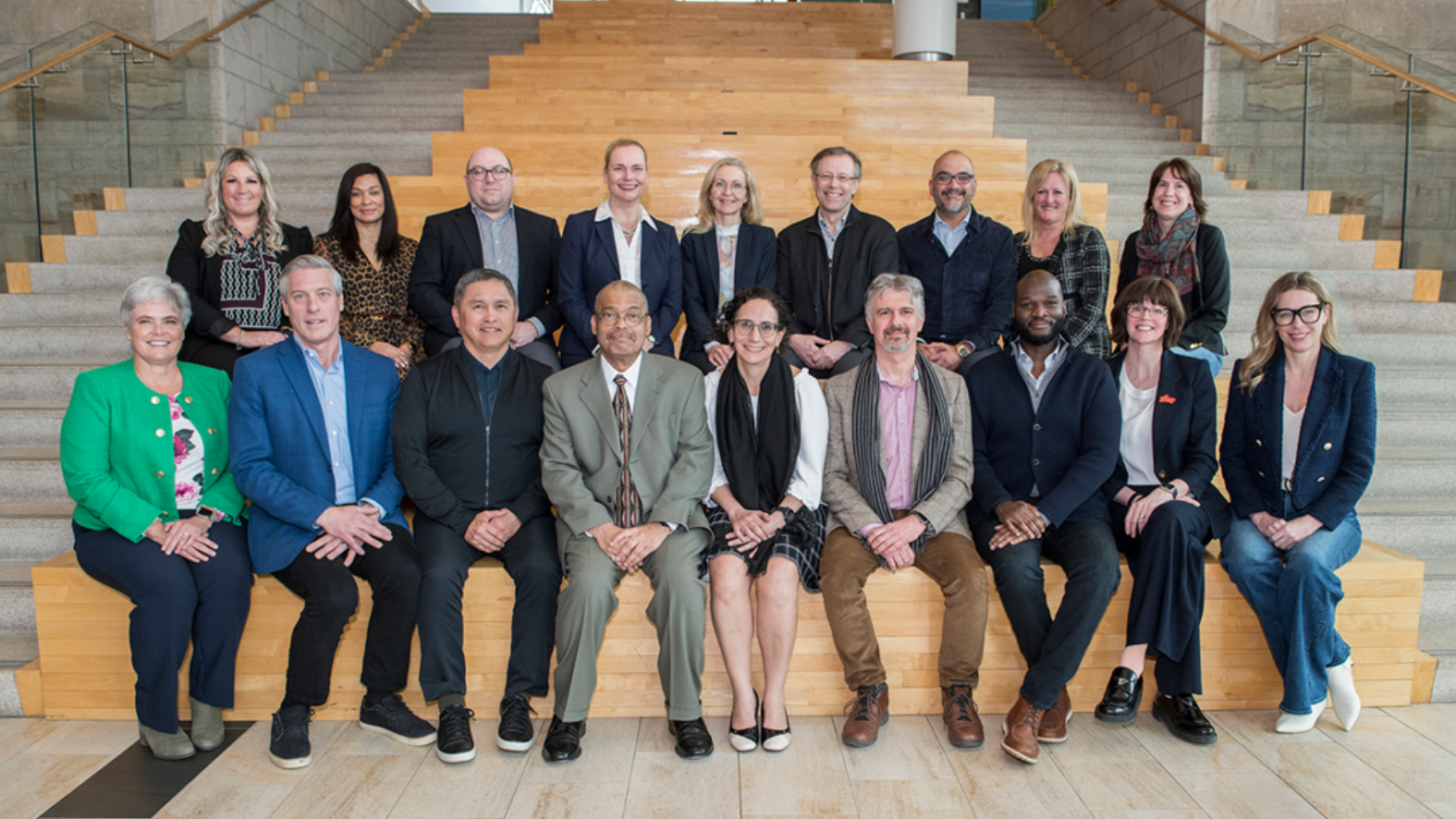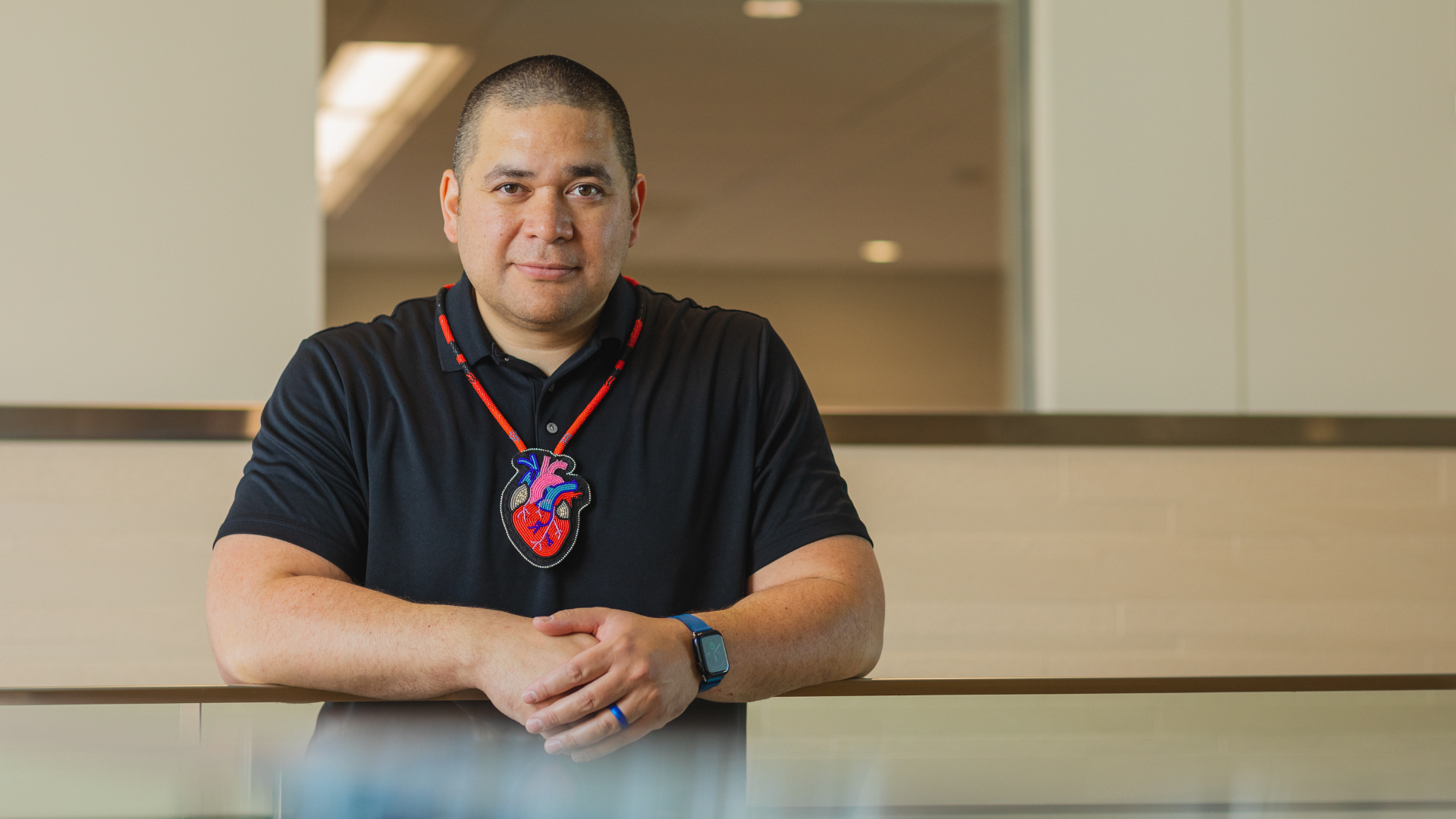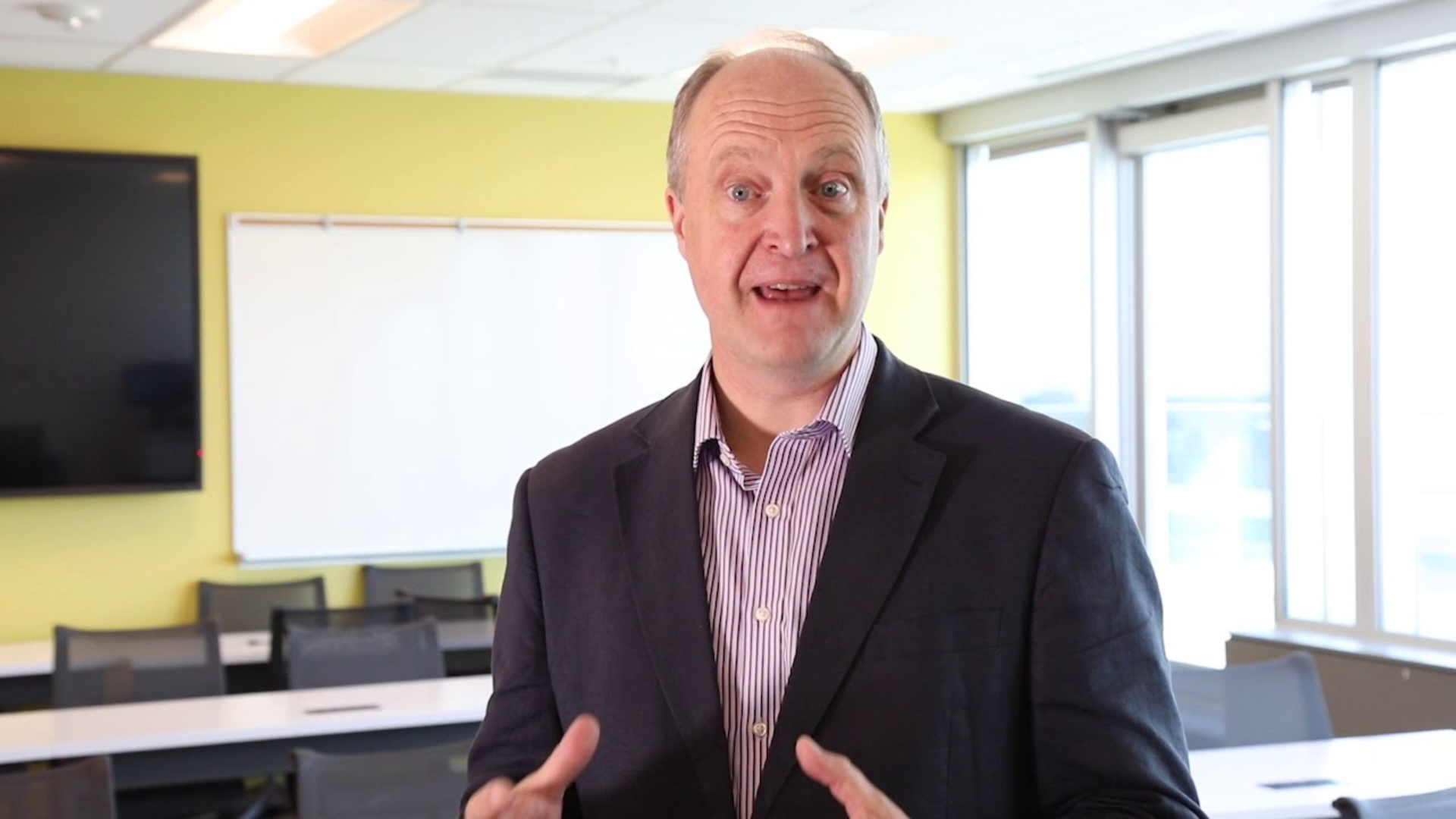Considering health system innovations that put patients first: Insights from Nancy MacCready-Williams
November 7, 2024 ·
Contributed by: Joanna Williams, Marketing and Communications Strategist

Since 2011, Nancy MacCready-Williams has led Doctors Nova Scotia in supporting a healthy and vibrant physician community while working with health-system leaders and partners to transform healthcare delivery in Nova Scotia. Early in Nancy’s career she practiced law and held senior roles at the Workers’ Compensation Board of Nova Scotia.
We sat down with Nancy to discuss the learnings and insights she gained from collaborating with colleagues in the National Health Fellows program during a learning module in Palo Alto, California.
What are the disruptive forces happening in healthcare that we need to prepare for?
One of the big ones, but not the only one, would be AI and its various uses – both in terms of simplifying tasks that traditionally are done by certain individuals and healthcare workers and understanding their implications. And then enabling AI to do things that we have not even imagined in the future. I think people are so worried that AI is going to take jobs that we are not really thinking about it as the enabler of something else.
Demographic shifts are another issue, both from the patient’s perspective and from a provider’s perspective. We are an older, sicker population; therefore, we are going to need more care and cost the healthcare system more. It’s not about throwing more money at the problem; it’s about delivering care in different, more efficient, and effective ways than we do right now. Those who deliver care are also an aging demographic. For example, in Nova Scotia over 25 per cent of family doctors are over 60, a worrisome statistic.
How can technology help healthcare providers bring more coordinated healthcare to all patients?
We often make decisions in healthcare that are not data driven, but rather, may be motivated by political reasons. Technology being leveraged to capture more data will support better healthcare planning and coordination of care.
I have two other observations on this one. One is from a systems perspective – technology can help everybody in the patient’s circle of care see all the patient’s data in one place. Right now, all patient information is siloed and distributed across the province, and cannot be found in one specific place. The initiative called One Person One Record that is being implemented in Nova Scotia will be an amazing improvement.
And the other piece around technology and coordination of care is that when we put all that information in one place, it puts the patient’s own personal health information in their own hands. If we give Nova Scotians a tool where they can access their own data, they have agency and can take steps from a health promotion perspective to take responsibility around lifestyle choices. If we have that information at our fingertips and some support, we might be able, from a health promotion perspective, to make the kind of lifestyle decisions and choices that might mitigate against illness in the future.
Why do you think it is important to understand what is happening to advances in healthcare technology in California, and how does that relate to what the Health Leadership Academy is trying to accomplish?
There is an opportunity to lead in the healthcare space. California is on the leading edge of so much innovation, and from seeing a couple of organizations that we visited, they are encouraged to innovate and fail fast. When they fail it is not a problem – they learn through failure, they keep going. I think we can learn from the entrepreneurial spirit found in the privatized healthcare sector in the US. We do not have that same freedom in Canada as a public system. With government the funder of the system in Canada, there is not a lot of room for innovation, unless there is a government who is willing to take risks. Companies like Apple for example are profit driven, they want to save the world, and at the same time, they are profit driven. There is a lot to learn from what the private sector in a privatized healthcare system is doing, that may be transferable to our publicly funded system in Canada.
What resonated with you the most, what excites you and what concerns you?
There was so much that I found stimulating and quite frankly, a little scary, but I was excited by our visit to Apple, and I was particularly fascinated by the presentation on Singapore. The tool that is being used as a health promotion mechanism gives people in Singapore agency over healthy decisions that they can make. They can access easy-to-understand information on their phones and make great choices when it comes to exercise and what to eat. Information collected can then inform health policy decision-making for that particular part of the world. Health promotion and healthy behaviors, supported through technology, can be an antidote to illness over the long term. The scale of this initiative was an amazing thing to see because we tend to do these innovative things in small pockets in Canada. The fact that this was rolled out across that entire jurisdiction was fabulous.
I contrast that to an equally amazing outcome with ‘low-tech’, and that was the Kaiser Permanente example. When the speaker discussed the length of stay in hospital post-hip surgery going from four days to four hours, it was a low-tech solution that created this positive outcome. The solution wasn’t something glossy on everyone’s phone. It was Kaiser Permanente having control over all stages of the process from the moment someone indicates that they’re going to need a hip replacement to the point of recovery back in that person’s home. This detailed analysis is possible because they are the insurance company, the service provider, the hospital and the caregiver; they control everything in the lifespan of that procedure that needs to be done, and they pay for it all. They look at every specific process and ask themselves ‘what needs to happen to have that person discharged within four hours, back in their home where they want to be’, with all the supports necessary around them to recover in the comfort of their own home.
In this age, it is easy to go after the flashy technological solution. This ‘low tech’ example was just that: a really good process that led to very thoughtful patient-centric decision making. I was just heartened that technology is not the solution for everything. You cannot apply technology to bad processes and have a good outcome was my takeaway from that.
Can you tell us about your experience being part of the cohort?
When you sit back and listen to all perspectives around the table, we have different tools and expertise at our disposal given whatever organization we work with and whatever life experience we bring to the table. But at the end of the day, we all want the same thing and that is better healthcare for Canadians.
There is this real galvanizing sense of purpose around what we want to achieve. There have been misconceptions about the private sector being all about making money, and the public sector being all about delivering care in old-fashioned outdated ways. I think that is what’s lovely about the conversations we’ve had. All those myths have been stripped away and everybody has a shared understanding of all the gifts that everybody around the table brings to the conversation. At the end of the day, we all want the same outcome.
We all have different tools at our disposal and working together can have a profound impact if we can coordinate those gifts for the greater good. I loved being in a room of people whose perspectives are different from mine, but at the same time, we hold the same values when it comes to why we work in the healthcare system. We all want to see better care and better outcomes for Canadians.













